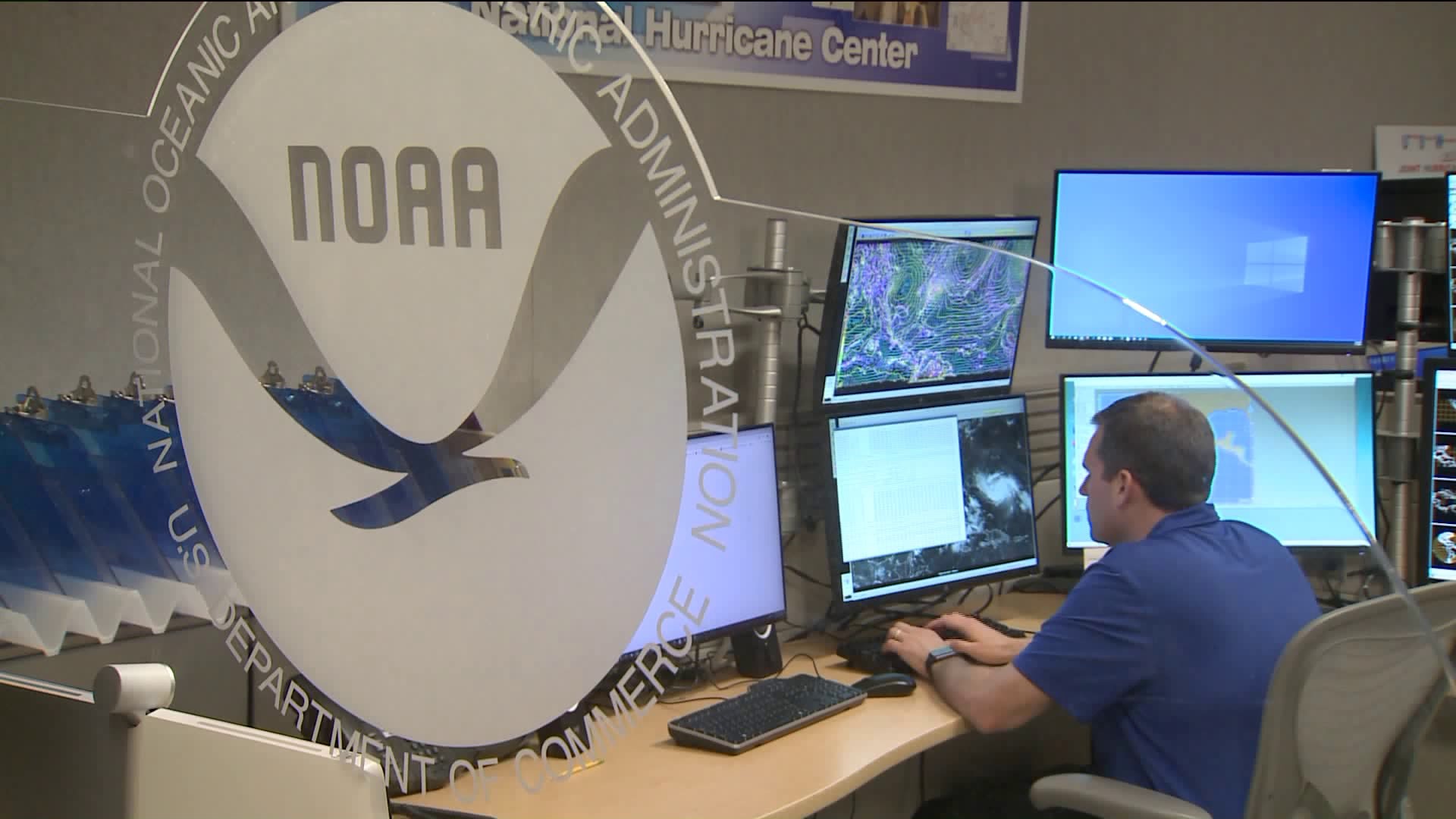Every hurricane season, the attention of many coastal communities is on the tropics, as many residents watch for that all-important hurricane forecast. For a behind-the-scenes look at who makes those forecasts, we took a trip down to Miami and visited the National Hurricane Center.
Dr. Michael Brennan is the Branch Chief of the Hurricane Specialist Unit at the National Hurricane Center. His team analyzes a tremendous amount of data before putting out a forecast. Even with all that technology, the forecast still comes down to the experience and prowess of a meteorologist.
"A lot of people are surprised that there's a human being here, clicking on and making the forecast." Brenna told us, "There's a lot of care that goes into making that forecast."
According to Dr. Brennan, "The whole process begins with an analysis. The forecaster's looking at satellite imagery, any other surface data. We might have data from an aircraft, data from radar, or microwave satellites. They're coming up every six hours with their best analysis of where the storm is centered, how strong the peak winds are, how big are the tropical storm and hurricane-force winds. All that kicks off the forecast process."
These scientists coordinate with emergency managers once a landfalling storm is imminent. Sometimes, it involves a significant undertaking.
Ahead of Hurricane Florence in September 2018, over 1 million residents in the Carolinas and Virginia were evacuated from the hardest-hit areas. Even in Connecticut, we still must be focused on the weather all around us.
"You live in a place where you get other hazardous weather. You get coastal flooding from nor 'easters, you have blizzards and winter storms. That kind of emergency preparedness mindset can be useful for all of those hazards," Dr. Brennan pointed out.
Real hazards and near misses can lead to forecast fatigue, which is why meteorologists have had to add a new type of science to their repertoire: Social Science.
"Social Science is focused on how people use and understand information, how they might interpret a graphic, or what the words mean to people. And then, how does that translate into behavior?"
With so many people on social media, it's not so much about getting the word out; it's about getting the correct word out.
Dr. Brennan told us, "The trick is helping people sort through the noise. People are out there posting all sorts of information about the storm. Model forecast, their own personal forecasts..."
The human impact of storms is something every forecaster is aware of when they send out that warning.
"I don't think I'll ever forget the day Michael made landfall as a Category Five in the Florida panhandle. You know what's going to happen. In situations like that, people are going to lose their lives."
The key for these forecasters is to get the message out as best they can, and the key for residents in hurricane-prone areas is to be prepared and listen.

